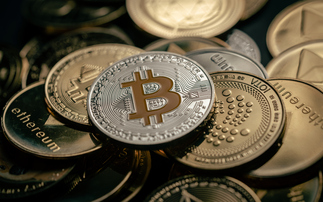In this week's Budget, George Osborne announced a freeze on the duty on Scotch whisky, describing the industry as a "huge British success story".
The duty freeze is good news for drinkers, but few people know there is actually a thriving market of investible scotch whisky. So what is the scope for investing in this whisky?
Scotch whisky has international appeal, and it accounts for a quarter of all UK food and drink exports, according to the Scottish executive and rural affairs department.
Such is the importance of the spirit that the government recently set up a body to protect the authenticity of Scotch whisky.
Scotch whisky accounts for a quarter of all UK food and drink exports
Whisky is popular abroad and demand for the drink - both as an investment and for pleasure - has been growing from burgeoning middle classes in China and Japan. However, the investing community in the UK is still small, explained whisky specialist Andy Simpson.
"Awareness of whisky as an investment is still pretty small. It is quite a niche. It is a passion investment," Simpson said. "Usually an investor falls in love with a distillery and they start wanting to buy bottles. Then they realise the whisky is rising in value. They turn that passion for drinking in to a passion for investing."
Pure malt
The universe of investible Scotch whisky revolves around single malt whiskies. This Scotch must be made from a single distillery using 100% malted barley and, by law, must have been matured in oak casks in Scotland for at least three years.
Whisky made from mixtures of malt and grains or blended from different distilleries may be nice to drink, but is worth far less as an investible asset.
Age is a crucial factor for whisky investors, particularly since many of the old distilleries have shut down, even though their whisky is still celebrated.
"When you are investing in any liquid, including Scotch, age does matter," he explained. "The industry is running out of old whisky."
The distillery is the other most important factor. Whiskies from Bunnahabhain, Glenfiddich, and Ardbeg are among the most coveted.
A bottle of Glenfiddich from the 1970s will easily fetch north of £2,000 and often trade for around £6,000.
Due to the small and slow-moving nature of the whisky market, prices tend to remain stable and rise slowly over years.
The 'right' whisky
However, although there may be stability in the market, dispersion is wide. The trick to investing is finding the ‘right' whisky to buy.
"The right bottles are going up and up and up, and the wrong bottles are falling. Like any investment, you can lose your shirt if you do not get it right," Simpson added.
An example of this is Dalmore Highland single malt, bottled in 1978 after maturing for 50 years. This was bottled in to 60 crystal decanters, and now a single bottle sells for £15,000.
However, a very similar Dalmore Highland single malt bottled a little earlier in the 1970s in to ceramic decanters now fetches £7,500 a bottle.
The absence of a crystal decanter is not the only reason for price differential - the former whisky has become world renowned as one of the best ever produced.
No glitz
So how much does presentation of the whisky count? Not as much as the reputation of the distillery and age of the Scotch, Simpson said.
There have recently been a number of expensive whiskies launched in glitzy bottles encrusted with diamonds and gems.
The most famous of these was the Johnnie Walker Diamond Jubilee Blended Scotch, priced at £120,000 a bottle. But Simpson said these should generally be avoided, not least because some are blends rather than the collectible single malt.
Finally, investors must beware of fakes. Incredible though it sounds, fakes of rare whiskies have been found at every major auction house, and the government's authenticity body was set up in part to counteract forgeries.













